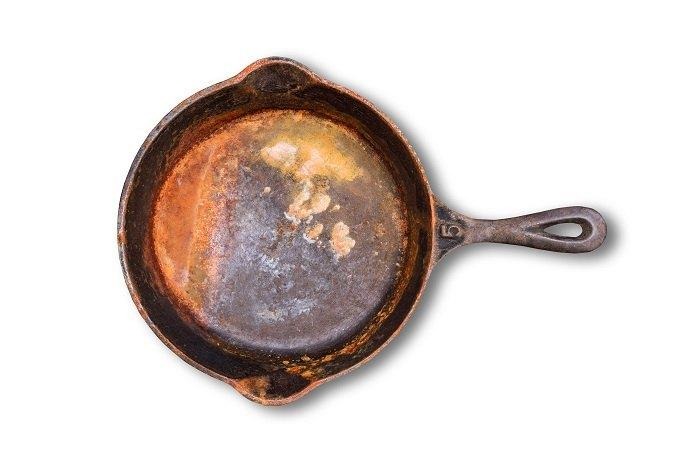5 Things You Are Doing Wrong With Your Cast-Iron Pan
Everyone should own at least one good cast-iron pan. You can do so many things in it, from roasting a chicken to making a fruit crumble and from frying eggs to making cornbread.
Cast iron means that you can sear and cook at much higher temperatures than with regular pans. You can start something on the stovetop and then throw it in the oven without a second thought. Just remember to use oven gloves, because those pans get hot!
Using cast irons is a simple affair, just avoid making the mistakes below and you will keep your pan in good health for many years!
Failing to Preheat
Make sure you don't start cooking in a cold pan. If your pan is not hot enough, things will stick! Avoid any sticky situations by heating your cast-iron pan over an even heat.
Washing It With Steel Wool
Instead, use salt and a paper towel. Always wipe your pan clean with a towel as you go, it will be much easier to remove any cooking residue while the pan is still hot, just be careful not to burn yourself in the process!
You can wash cast-iron pans with a non-abrasive sponge without removing the seasoned layer.
Failing to Dry Your Pan Before Putting It Away
The slightest bit of residual moisture can turn to rust if you leave it, so make sure you thoroughly dry your cast-iron pan after washing it.
Pro tip: Put your pan back on a burner and heat until it is completely dry to avoid rust. If you are stacking your cast iron beneath another pan, place some paper towels between them to catch any further moisture and avoid any surprise rust spots.
Not Re-Seasoning After Each Use
In order to maintain the seasoning of your pan, try to re-season after most uses. After drying your newly cleaned pan over a medium flame, re-season it by rubbing a small amount of fresh oil in a thin layer over the entire pan while the pan is still hot.
Buying a Pan That's Too Light
Cast iron is cast iron, so it should be heavy; if it isn't it then it's probably a fake. Cast-iron pans are made when molten iron is poured between two sand molds, so the handle should not be screwed on to the pan, but attached seamlessly.



